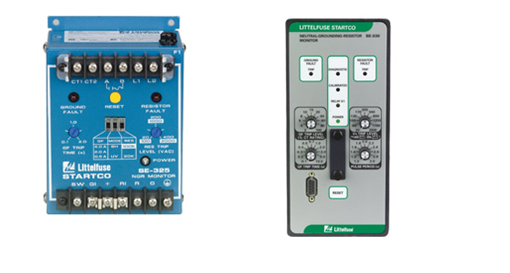Neither a high resistance-grounded system nor an underground system can supply line-to-ground loads. If protection and monitoring equipment is connected from line to ground, then it must not threaten the protection system and cannot have any sort of effect on system performance. However, if line-to-ground potential transformers (PT's) are used to measure line-to-ground voltages, the PT's create a Y-Y transformer connection:
In the event that there is a disturbance in PT-secondary loading, it will result in a neutral-grounding-resistor (NGR) current flowing even if the system is not the cause. The resulting current will be below ground-fault relay pick-up levels for the majority of the time, nevertheless system consequences must be considered in the event that line-to-ground PT's are used in high-resistance-grounded system.
The system being grounded through the PT will produce an open NGR, with the potential of high voltage. Fortunately, this rarely occurs with 3-phase PT connections.
Littelfuse provides two ground-fault and neutral-grounding resistor monitoring relays called the Startco SE-325 and SE-330 to continuously keep track of NGR resistances as well as monitor neutral voltage and current for the additional purpose of detecting resistor failure during the ground fault. To measure NGR resistances, the devices inject a sensing signal through the NGR.

From left to right: SE-325 and SE-330
For more technical detail regarding the SE-325 and SE-330 visit Littelfuse.com.
By Maximilian Teodorescu
Advertisement





